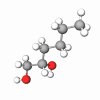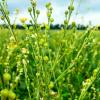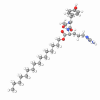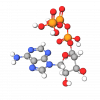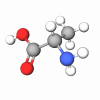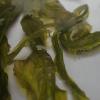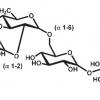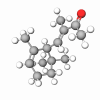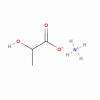Hydrolyzed Elastin is an active ingredient obtained by enzymatic degradation of fiber protein elastin. Usually, the source of elastin is bovine. This multifunctional ingredient is a non-viscous, amber-colored, clear to the slightly opalescent solution, which is clearly fluorescent under UV light.
Hydrolyzed elastin is mainly composed of the so-called β-elastin, the low molecular weight elastin peptide. Besides, it contains small quantities of elastin peptides of a higher molecular weight and some naturally occurring collagen hydrolysates.
The activity of elastin hydrolysates ( α-, β-, κ-elastin) after the local external application has not yet been clarified completely and exhaustively. Resorption by the skin, incorporation into the elastin matrix of the skin, and consequently improvement of the skin's elasticity have been described and discussed.
Studies showed that elastin fragments activate skin fibroblast and boos extracellular matrix components production, including collagen and elastin. Also, it's a perfect source of building blocks for producing those essential proteins.However, Hydrolyzed elastin may be regarded as a protective protein with affinity to skin and hair. It is used as an additive to skincare cosmetics such as nourishing creams and body lotions; it is also very suitable for hair treatment products.
About Elastin
After collagen, elastin is the second most abundant structural protein in the animal body. It is found in most connective tissues combined with other compounds – proteins, proteoglycans, and glycosaminoglycans (GAGs). It is essential for the elasticity of the connective tissues, allowing them to extend and then recover.
In combination with collagen, elastin is responsible for the unique combination of flexibility with tensile strength in the connective tissues. It is found where resilience is most important – e.g., in the tendons, ligaments, vascular walls, the aorta, and the skin. It is intertwined amongst “bundles” of collagen fibers in the skin, forming a fibrillar sub-epidermal network. It has been noted that structures, which require greater tensile strength, contain more collagen and proportionally less elastin. It is well known that the elastin content of tissues is adversely affected by the aging process.
Elastin is produced by the mesodermal cells (fibroblasts) analogously to collagen. Native elastin has a high molecular weight and is insoluble in water; it is resistant to enzyme attacks. To incorporate it into cosmetic formulations, careful hydrolysis down to lower molecular weight fractions is required. On hydrolysis of selected elastin-rich feedstock and purification of the extract, a cosmetic grade protein may be obtained, as with hydrolyzed elastin.
